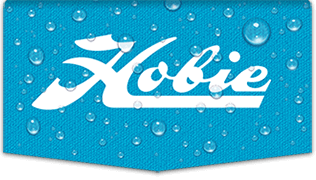Note: This is a three part article on the Hobie i12s inflatable. Part 1 is about portability -- unpacking and packing http://www.hobiecat.com/community/viewtopic.php?t=7633 . Part 2 shows the boat's features. Part 3 talks about on the water performance: http://www.hobiecat.com/community/viewt ... 37c7fbf866
Part 2: Features and more options.
This is mostly a photo essay showing some of the detail on the i12s. So without further ado, lets get started!
Looking forward, notice the 8" Twist-N-Seal hatch

Inside the forward compartment, you're looking at a rib from the center bladder that helps shape the bow:

Water drain plug drains the plenum between the bladders just in case of an outer breach (or open hatch):

Mast step, with downhaul hook:

The Drivewell cassette is one of the really slick features. Just drop your Drive in and spring loaded levers lock it in place. Fast, easy and secure. This unit is made of high temp, high impact Polycarbonate and welded securely to the fabric. Very solid!

Drivewell plug is included. Notice the little handle:

The seat is actually adjustable fore and aft so it will fit virtually anyone of any size. It is similar to the current Hobie seat, but has an even thicker seat bottom to keep your butt off the deck. This front view shows the adjustable forward anchor strap:

Seat, rear view with 2 anchor straps. Just aft of the seat are two scupper holes with plugs. The boat was so dry that I never used them, but I'm getting ahead of myself here.

Another ingenious feature is the second generation Twist-N-Stow rudder system seen here on the starboard side. Simply pull on the red handle to raise the rudder and lock the line in the built in clam cleat. Once you get used to it, it is slick and easy. Looking aft, note the rudder is up:

Rudder down position:

"Tiller" located on the usual port side. Simply rotate the knob in the direction you want to turn. Boat handles are well positioned and handy.

Paddle anchor also showing a good close-up of the Denier 1000 fabric:

Nozzles for the 3 air bladders. Under each of the protective plugs is a valve -- just push and rotate to lock and let all the air out in a hurry. During inflation, the valves operate automatically with your pump. It's amazingly easy and foolproof!

Rudder area. The boat comes with the standard Hobie rudder, but can accommodate the larger (old style) sailing rudder. By now, you've probably noticed that all the rudder lines are sealed in these tubes. No binding -- everything operated smoothly.

Looking aft, you see how large the cargo deck is. Plenty of room for diving gear, kids or whatever. In this view you get a good view of the handles and triangular "padeyes"(?) for the sail shrouds.

Included is this 4 part paddle -- very easy to pack:

This bottom view shows the cart mount. Notice the drive can remain installed with the cart, but the fins must be retracted or straight down. You can wheel the boat right into the water, then lift the bow to drop the cart away (it floats). Note the scupper holes just aft and the keel strip for protection:

The sail is identical to the small sail, but the mast is a 3 piece unit connected with a long internal bungee that keeps it together. Also unique, there are 3 stays that support the mast in a conventional manner:

I left the boat inflated to check the pressure over night for any loss due to leakage or cooler temperature. Here the boat is loaded and ready to head out in the morning!

That wraps up part two. In part three, I'll report on the performance.





























